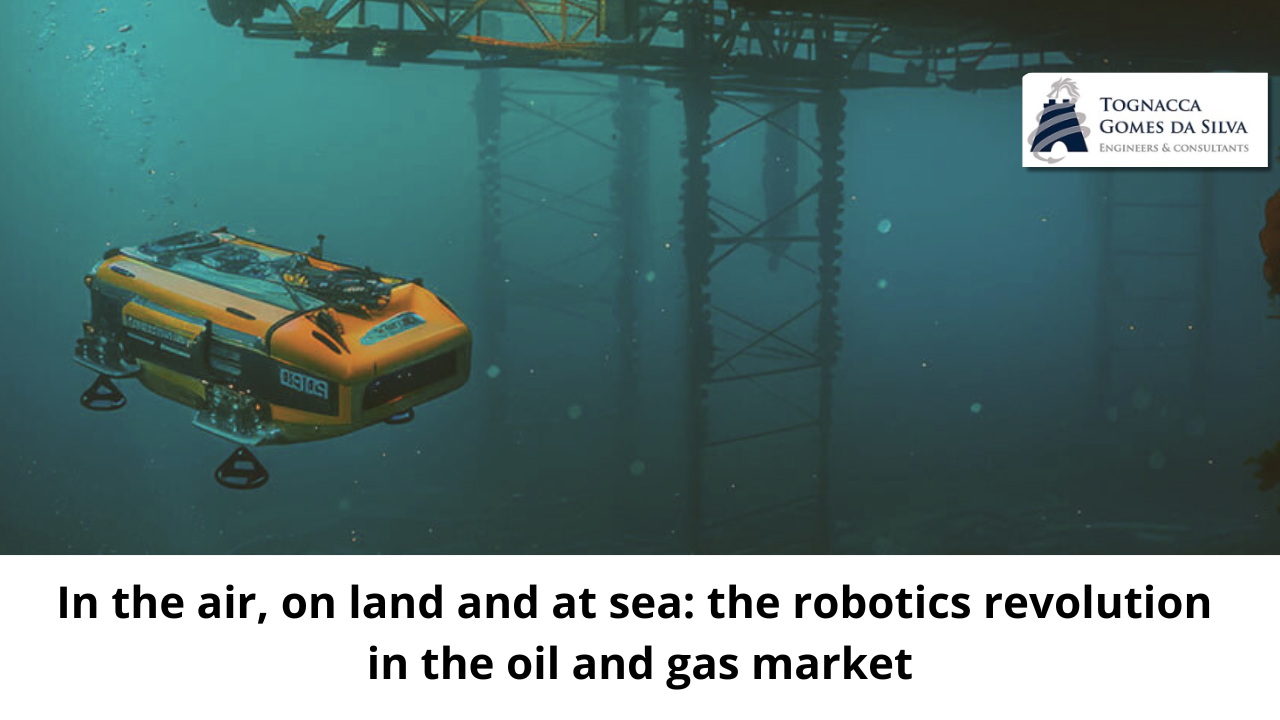In recent years, the advancement of robotics has profoundly transformed several industrial sectors, with emphasis on the oil and gas industry. The latter, traditionally exposed to high risks and complex operational conditions, has adopted robotic technologies to redefine processes, prioritize safety and maximize efficiency. Drones and unmanned underwater vehicles exemplify this revolution, enabling the exploration and monitoring of areas inaccessible and dangerous to humans. Automation also stands out, freeing workers from repetitive and risky tasks, with robots performing underwater welding and other critical activities with precision and safety. The growing adoption of robotics also offers financial advantages, reducing operating costs and increasing profit margins.
In addition to gains in safety and economics, robotics also provides significant improvements in the sustainability of oil and gas operations. With the use of drones and other autonomous robots, companies are able to more effectively monitor the environmental impact of their activities, which drastically reduces the risk of ecological disasters. This article explores how this technological revolution is unfolding in the upstream and midstream segments, shaping the future of the oil and gas industry.
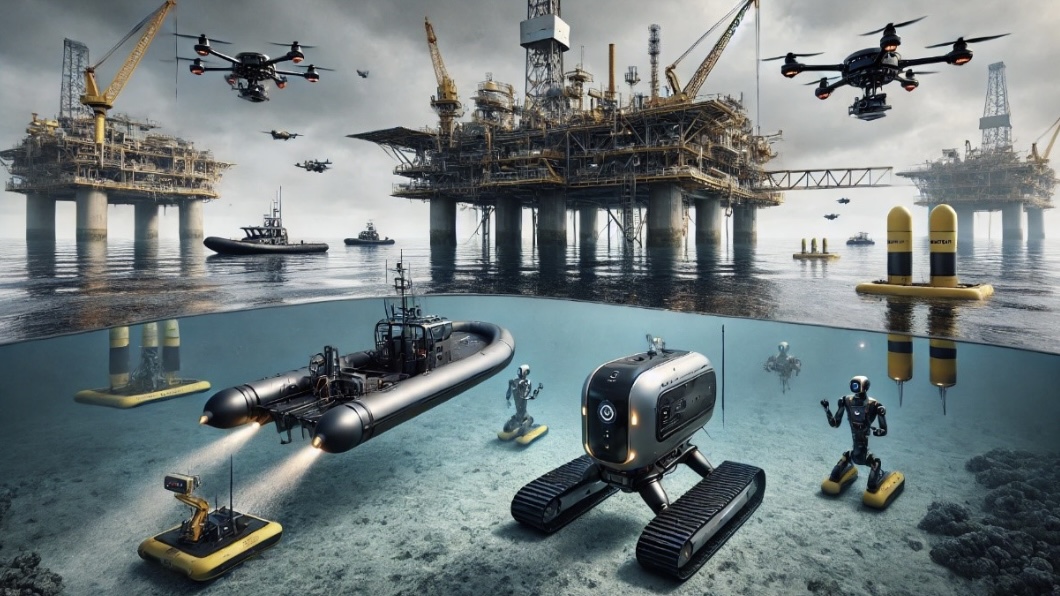
AI-generated illustration image by author
Offshore oil and gas exploration as a motivation for using robots
Offshore oil exploration got off to a challenging start, with pioneers braving deep, dangerous waters to access new reserves. In late 19th century California, the Union Oil Company pioneered seabed drilling, establishing a landmark for the industry. Subsequent innovations, such as fixed platforms, allowed operations further offshore, requiring skilled workers, and advanced safety measures to protect the environment.
Over time, technologies such as Remotely Operated Vehicles (ROVs) have further transformed offshore exploration. These remotely controlled submersible robots were the first robotic systems to be used in the industry, and they are still used today. They can carry out inspections, maintenance and interventions at extreme depths, previously unreachable for divers. From installing equipment to checking for leaks, ROVs (Remotely Operated Underwater Vehicle) have provided safety and efficiency in operations, allowing critical tasks to be performed in risky areas without exposing workers to danger.
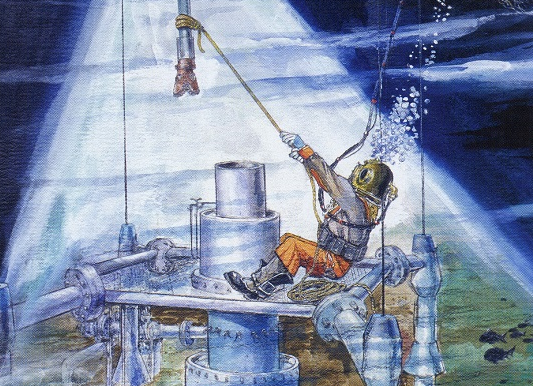
Stabbing in, 2007. Hazardous work has been replaced by technologies like ROVs. (https://aoghs.org/offshore-oil-history/)
Today, offshore exploration is essential to the global supply of oil, supported by major investments in technologies that ensure safe and environmentally responsible operations. ROVs and other innovations have enabled significant advancement in the exploration and protection of natural resources, establishing offshore operation as a vital and technologically advanced sector of the energy industry. Modern ROVs are electro-hydraulic robotic systems, capable of handling different types of tools, and reaching depths of around 6000 meters.
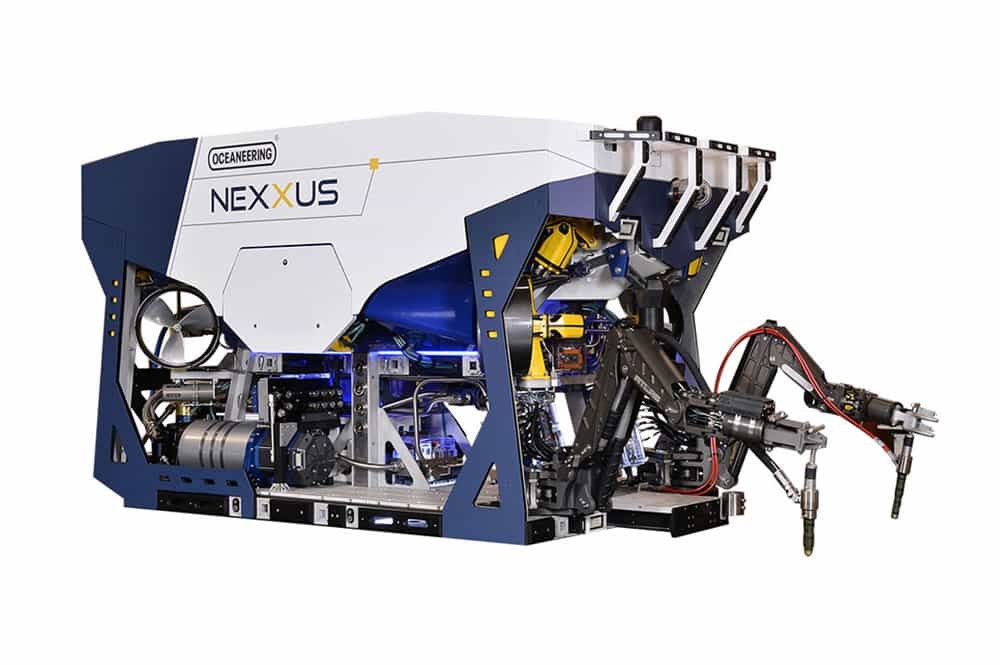
Oceaneering heavy-duty class ROV NEXXUS. (https://www.oceaneering.com/pt/rov-services/rov-systems/)
The invasion of AUVs
Autonomous Underwater Vehicles (AUVs) represent a significant evolution in relation to Remotely Operated Vehicles (ROVs). While ROVs are controlled directly from the surface by operators via umbilical cable, AUVs are completely autonomous and can operate independently in the ocean depths. Another advantage of AUVs is that they can remain parked on underwater docks where they autonomously recharge their batteries and download data. This data is transmitted to the surface later, providing greater continuity and efficiency in underwater operations.
Brazil stood out as one of the pioneers in the development of AUVs (Autonomous Underwater Vehicles), and FlatFish is a milestone in this innovation. This project began at Senai Cimatec, in Bahia, with financing from Shell, through the Research & Development clause required by the ANP (National Petroleum Agency). In 2018, Saipem took over the project, improving FlatFish so that it could perform autonomous inspections in deep water. Equipped with advanced mapping technology and sensors, FlatFish is capable of monitoring underwater infrastructure in detail.
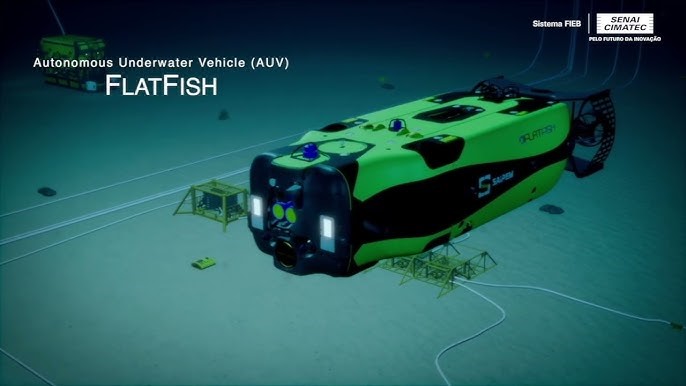
AUV Flatfish Saipem (image: SENAI CIMATEC)
The Eelume robot, developed by Kongsberg in partnership with the Norwegian operator Equinor, has a different concept from Flatfish, but also represents an innovation for inspection and maintenance of subsea infrastructures. Inspired by the anatomy of an eel, Eelume has a flexible and modular body, allowing it to maneuver in hard-to-reach areas and perform delicate tasks, such as opening valves and inspecting pipelines with precision. The flexibility of its design allows it to reach restricted spaces and perform complex operations, making it ideal for subsea interventions that require continuous efficiency and precision.
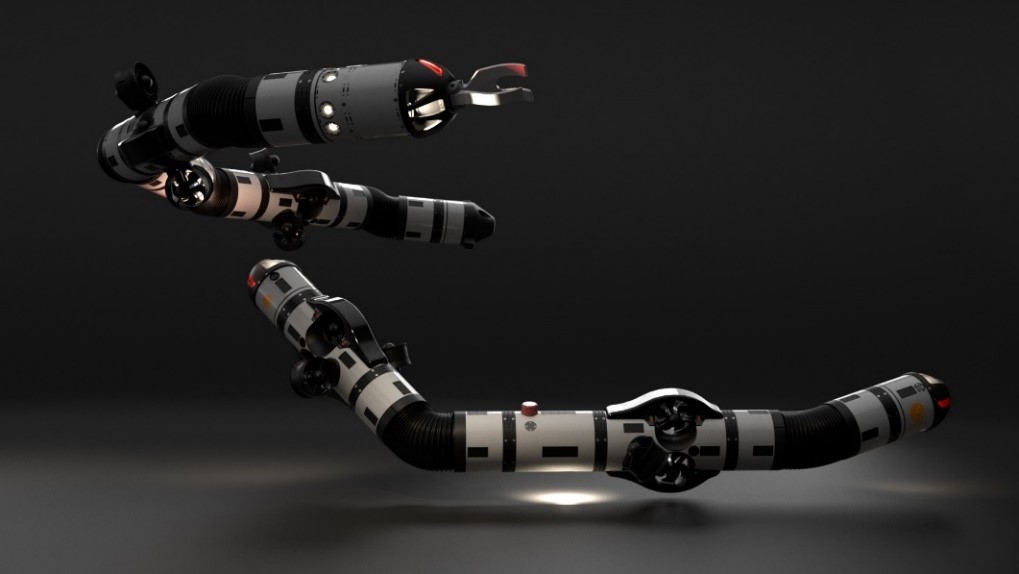
AUV Eelume Konsberg (https://www.kongsberg.com/maritime/feature_articles/2020/12/eelume-robot/)
The FlatFish and Eelume AUVs are just early examples of a new generation of autonomous robots for underwater operations. These technologies represent an advance in the sector, bringing automation and precision to inspection, maintenance and monitoring tasks in difficult-to-access environments. In addition to them, other innovative solutions are coming into operation, with robots increasingly autonomous and adaptable to withstand extreme conditions. The trend is for these technologies to improve efficiency, reduce costs and increase safety in subsea operations, further boosting the energy sector.
From the bottom of the sea to the surface
Technological innovations are also transforming the surface of the oceans, bringing essential support to upstream operations. Autonomous support boats, known as USVs (Unmanned Surface Vehicles), are already operating and revolutionizing the sector. A prominent example in Brazil is the USV Tupan, developed by Tidewise. This autonomous vehicle, designed to carry out inspections, monitoring and even transport small loads, operates independently in offshore environments and has already been tested in the Brazilian pre-salt, where it traveled long distances while being monitored remotely. Tupan is versatile and can be configured for various applications, such as leak monitoring, subsea asset inspections and environmental data collection, reinforcing Brazilian leadership in offshore autonomous technology.
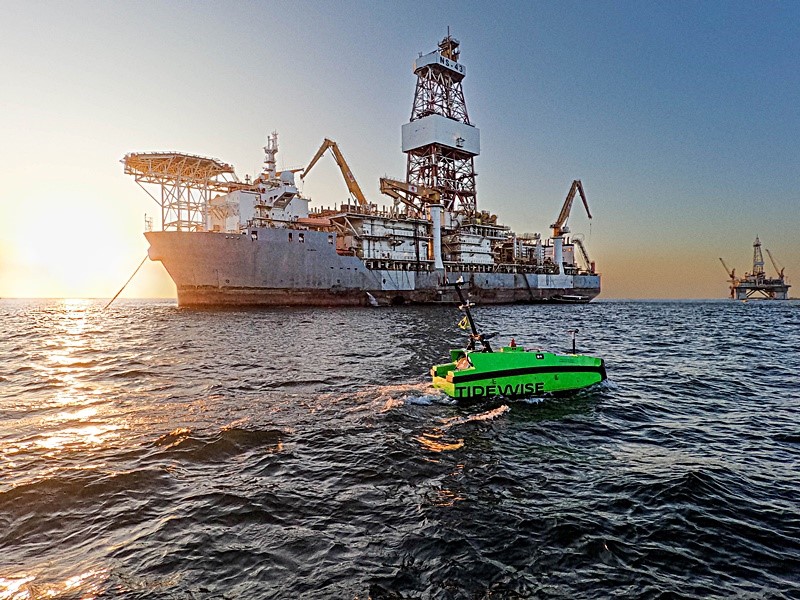
USV Tupan Tidewise (https://www.tidewise.io/pt/tecnologia-usv-tupan)
Towardsw the center of the earth
Autonomous robot technology is also advancing within oil and gas wells, with innovations such as WellRobot, developed by the Brazilian company Ouronova in partnership with Repsol Sinopec. This robot offers a cable-free approach to in-well operations, optimizing data collection and interventions without interrupting production. Awarded by the ANP and finalist for the World Oil Award, WellRobot has already demonstrated promising results in tests carried out at Geowellex’s teaching well, standing out as an innovation in safety and efficiency for the energy sector. Its design aims to be used on dry Christmas trees, and can be used on fixed platforms in the offshore sector or in onshore wells, such as shale wells or conventional oil wells.
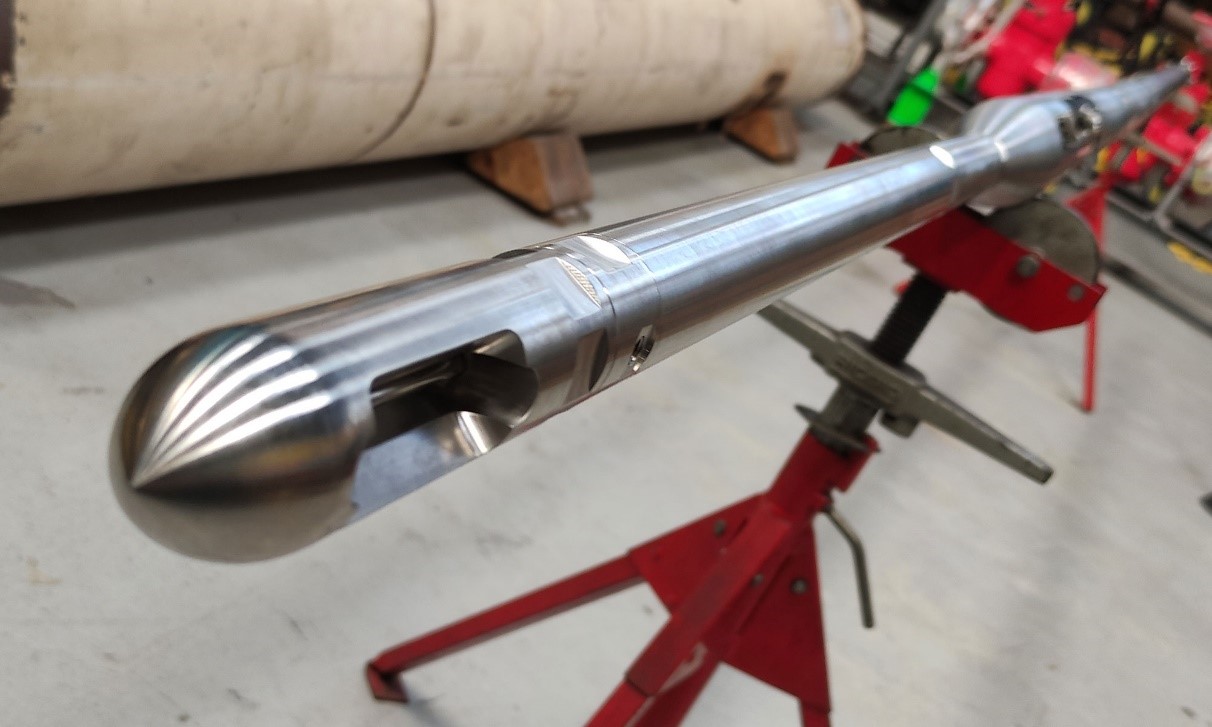
WellRobot Ouronova (https://ouronova.com/2022/02/23/)
On Platforms and FPSOs
On the topside of platforms and FPSOs, robotic systems have become increasingly essential, both in the operation and safety of activities. Drones are being widely used to carry out inspections in a variety of environments, including open areas and confined spaces, where the presence of human workers can be risky. These unmanned aerial vehicles not only improve the efficiency of inspections, but also help reduce associated risks by allowing teams to identify potential problems without exposing themselves to dangerous situations. Additionally, drones can operate in adverse weather conditions, further increasing the safety and effectiveness of operations in remote and challenging locations.
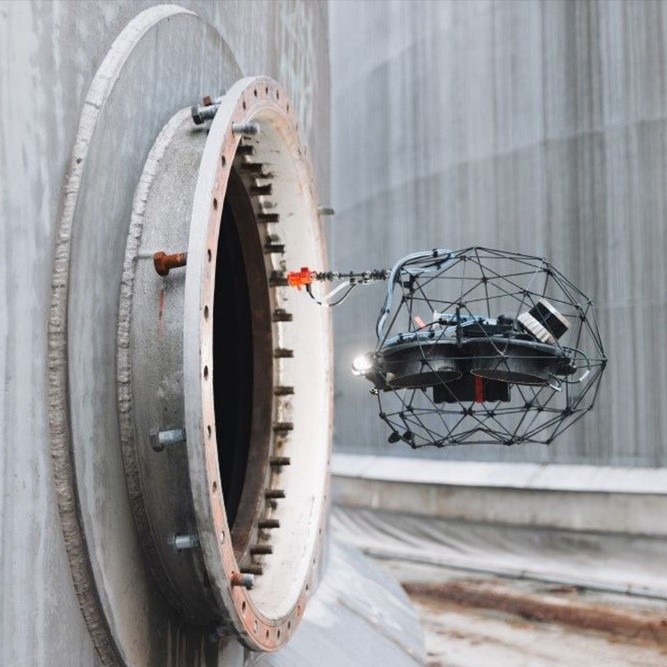
Elios 3 Flyability Drone (https://www.flyability.com/news/elios-3-launch)
In addition to drones, innovation in robotics has risen to a new level with the development of quadruped robots, such as AnymalX, from the Swiss company Anybotics. This robot was designed to navigate platforms with explosive atmospheres, offering an effective solution for tasks in environments where risks are high due to the gases present. Equipped with advanced sensors and mapping technology, AnymalX is capable of performing safety inspections, condition monitoring and real-time data collection, contributing to maintaining the structural and operational integrity of facilities. This integration of robotic technologies not only improves safety, but also provides a more efficient way to perform complex operations in high-risk locations, reflecting a growing trend in automation in the oil and gas industry.
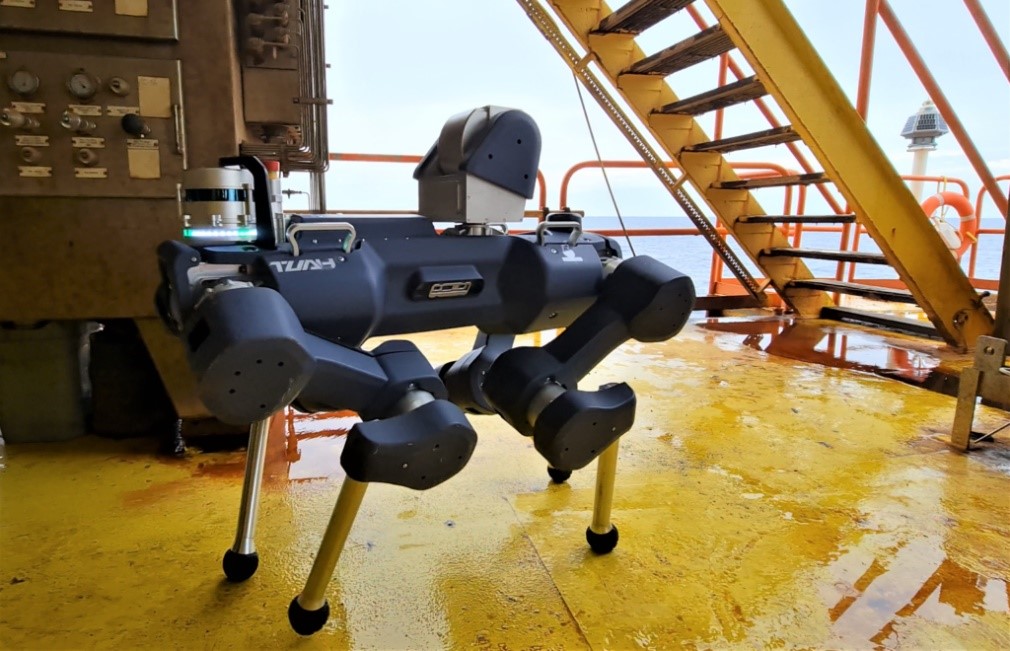
AnymalX Anybotics (https://www.anybotics.com/robotics/anymal-x/)
In Midstream
The Midstream segment is a crucial stage in the oil and gas production chain, responsible for the efficient transportation of these resources from extraction sites to refineries. At this stage, automation and robotics have played a fundamental role, contributing to safety, efficiency and cost reduction in operations. The presence of robotic systems in this sector is increasingly evident, especially when performing tasks that traditionally required the presence of human workers in potentially dangerous environments.
A notable example of innovation in the Midstream segment is the SIMÃO robot, developed by the company Ouronova, which stands out for its ability to carry out inspections on offloading hoses without the need to dismantle them and transport them to land. This technology allows offshore inspection services to be performed directly from a support vessel, optimizing the time and resources required to maintain operations. SIMÃO is equipped with advanced sensors and high-definition cameras, enabling detailed analysis of hose conditions in real time. This approach not only minimizes the risks associated with transporting heavy equipment, but also ensures a faster response to any identified problems, contributing to operational safety and the continuity of activities at sea.
vehicle engine
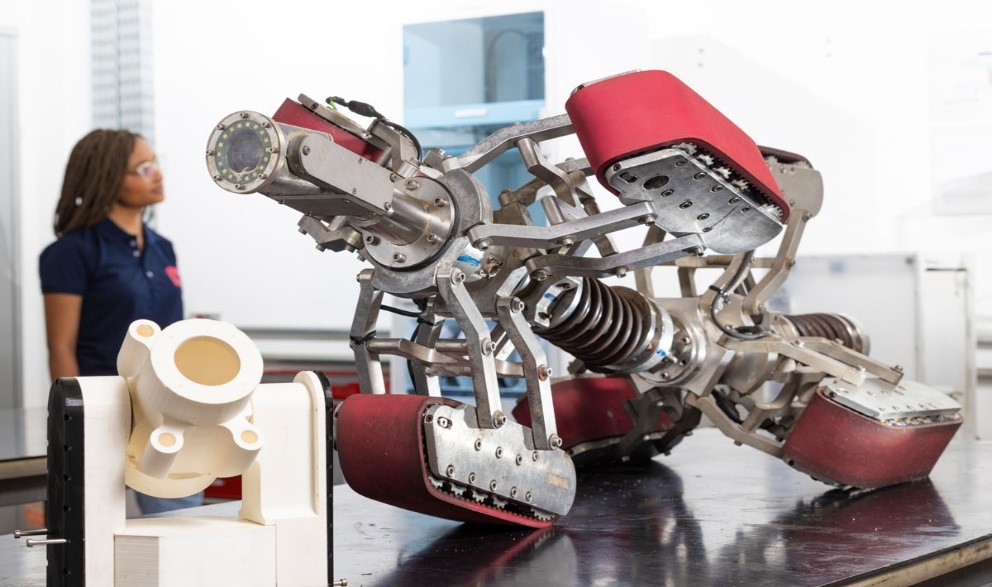
SIMAO Ouronova Robot (https://ouronova.com/in-pipe-crawlers-inspecao-de-tubos-nao-pigaveis/)
In oil refineries, robots are becoming increasingly essential for the modernization and safety of operations. The Italian company Gerotto stands out in this segment with robots designed to operate in crude oil storage tanks, eliminating the need for human presence in potentially dangerous environments. Its robots with electro-hydraulic technology clean the tanks, pumping out debris and oil sludge safely and efficiently, without putting human integrity at risk.
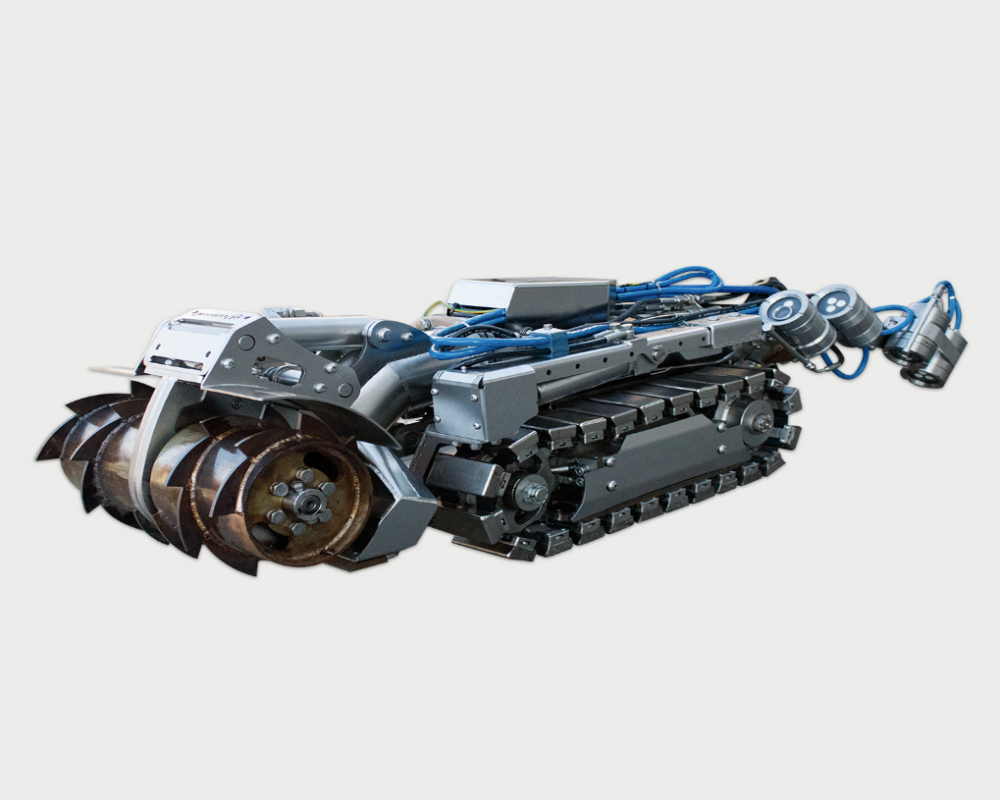
Gerotto cleaning robot (https://www.gerotto.it/en/robotics/lombrico-s/)
Robotic systems have come to transform the oil and gas sector, promoting greater operational efficiency, cost reduction and a significant increase in the safety of employees and the environment. The future of the sector is clearly focused on the increasingly robust integration of robotics and automation, with the aim of minimizing the need for human intervention in upstream operations. Audacious projects already envision fully automated platforms at the bottom of the ocean, which will be inspected, monitored and maintained exclusively by robotic systems. So the question is not whether the industry will reach this level of automation, but rather when it will become a reality. Innovation moves quickly, and the potential is limitless.
